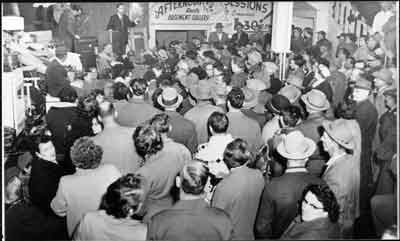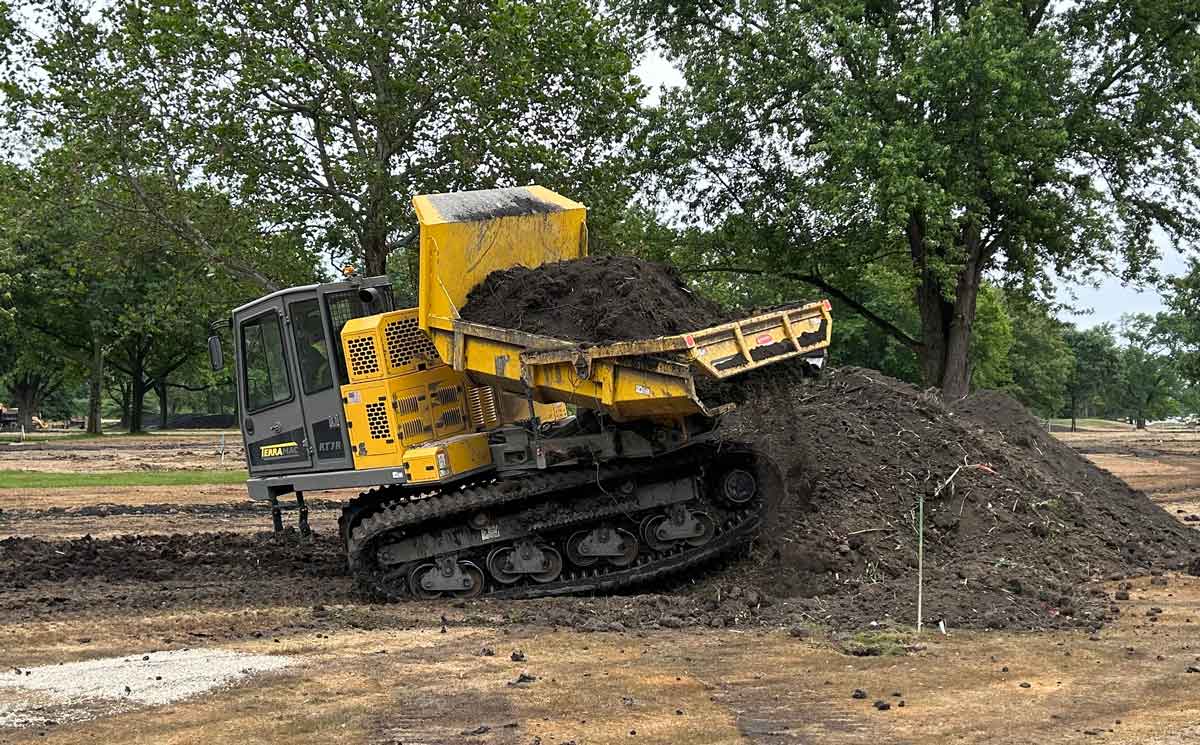Auction Pioneers: We Delve into the Legacy of Ritchie Bros. Auctioneers
One of the leaders in the global used equipment sales world calls British Columbia home, and the company can trace its roots to — of all things — furniture. It was 1958 and the Ritchie brothers — Ken, Dave and John — needed to pay back a bank note for their furniture store in Kelowna, British Columbia. At the suggestion of a friend, the brothers decided to conduct an auction to decrease their surplus furniture and repay the note.
That grand plan worked out so well that the brothers formed Ritchie Bros. Auction Galleries Ltd. By 1963, they realized there was more money to be had in industrial sales, selling used equipment rather than chrome-legged tables and vinyl chairs. That inclination — that equipment sales were the way of the future and would increase profitability — grew to become Ritchie Bros. Auctioneers, one of the largest and most recognized players on the global used equipment scene.
“We’re selling more than $4 billion worth of generally used construction and transportation assets annually now,” says Randy Wall, Ritchie Bros. president, Canada. “We have 44 permanent auction sites and more than 100 sales offices worldwide in more than 20 countries.”
Going Unreserved
Auctions have become an accepted manner to trade, buy or sell used assets, and in North America it is almost the first option to move used assets. In 2015, Ritchie Bros. sold $4.25 billion in equipment at its 345 unreserved auctions and its EquipmentOne online marketplace. Nearly 60 years after the first furniture auction, one of the cornerstones of the auction company’s first sales still holds true — the magic of the unreserved auction.
“The market has evolved very significantly. In the early days when we began, there were no national or international auction companies, just small regional players,” Wall says. “There wasn’t anyone selling on an unreserved basis; owners established minimum prices.”
While some consignors might be leery of the fact that their equipment would sell for a pittance of what it is worth, that rarely happens.
“The answer is yes, in theory, equipment could sell for a dollar, but understand the psychology of the auction,” says Wall. “It’s survival of the fittest as he who has the most money in their hand for a particular item and is willing to bid, wins. There is a vast amount of competition from different industries as well because a lot of different people can use the same type of truck in different industries.”
This variety of equipment, coupled with knowing the purchaser can stay within a preset budget, helps the auctions thrive. In 2015, the company sold more than 350,000 items for 47,600 consignors and registered more than 500,000 bidders. In the first four months of 2016, Ritchie Bros. auctions attracted 14,450 consignors, 119,000 lots, 166,000 registered bidders and 41,350 buyers.
“That is the secret that lures in 2,200 people on average — or 10,000 to 15,000 at our large events,” Wall says. “Those people are coming from a very broad distribution of geographies. At these large auctions, you’ll typically find people from more than 50 different countries are participating and virtually every state and every province.”
Setting Records
One of the reasons for the increased bidder numbers is the pervasive reach of the internet and Ritchie Bros.’ online bidding portal. Buyers have the ability to make purchases in real-time no matter where they live, and the popularity of online bidding is growing. In 2015, online buyers accounted for $1.9 billion or 45 percent of the company’s total sales. Wall notes that if a buyer finds the right asset at the right price, they will buy it from anywhere. While a person in Dubai appreciates the ability to purchase a skid steer from Toronto, many bidders attend the live auction and, in many cases, an online bidder will have an associate on the ground at the auction for inspection purposes.
“The bidder numbers are typically 50/50 or 60/40 online versus live,” Wall says. “People can come, touch, compare and inspect and bid with comfort and confidence at our yard.”
The mega auctions in Edmonton, Alberta and Orlando are outliers in the Ritchie Bros. world and attract anywhere from 10,000 to 15,000 bidders. These yards also yield many of the record-breaking stats that Ritchie Bros. auctions are known for.
“We have two mega yards that generate our biggest volumes and largest sales,” Wall says. “Those are Orlando, which typically has a large event in February that tends to be in the $150 million to $200 million range. This year that was $172 million. Edmonton is the other large yard. Last year, more than $731 million [CAD] went through that yard.”
Who’s Selling?
Buyers and sellers are not the only ones who have come around to auctions being accepted, and in many cases preferred, way of growing or adjusting their fleet.
“It has created liquidity in the marketplace, which is really important. That has been a major factor in enabling contractors and transportation companies to get financing for their equipment,” Wall says. “Banks, as we all know, tend to be conservative. They want to know what the exit strategy is if something goes wrong. They want to know if they can sell the assets and realize some capital. The auction business has created a liquid market for these assets where a buyer can borrow money for the purchase and the lender can take comfort in knowing there is an outlet and market for the equipment.”
Being an unreserved auction coupled with internet sales, Wall has witnessed a decrease in low spots during auctions. These are the spots where a dealer or wholesaler swoops in and gets the asset at bargain prices. According to the company, approximately 80 percent of its annual sales go to an end-user and about 20 percent ends up with wholesalers or dealer-type buyers, who are also competing against each other. This helps create a more stable and predictable resale value.
While Ritchie Bros. does sell equipment due to a business closure or a company’s financial distress, Wall notes that portion of the business is rather small. Most sellers use the auction as a way to manage their fleet, most commonly after either an update or the completion of a project. This is something that has not changed since the company’s early days. In fact, the first Ritchie Bros. auction in the United Kingdom in 1987 was a dispersal of equipment used to rebuild the Falkland Islands after the Falkland Island War.
“Ritchie Bros. is a one-stop shop — they know the market, and they have resources no one can touch,” said Harold Ward, president and owner of Newcom Earthmovers in a press release recapping the April Edmonton auction. “We’ve been buying and selling here since we started the company 12 years ago. With the changing landscape here in Alberta, we thought it would be a good time for us to sell, and we’re happy with the result.”






Comments are closed here.